2009 Polaris Scrambler 500 4×4 Review
Back in the early 1990s Polaris recognized a growing number of riders were buying utility machines with no intention of using them for work. With good splash protection and the flexibility of four wheel drive, utility machines offered these riders the ability to get out and ride year round regardless of weather. Unfortunately, riding a utility 4×4 meant dealing with a much heavier machine with considerably less suspension travel than its sport ATV siblings. To remedy this, Polaris set out to build a powerful sport-oriented machine with the flexibility of four wheel drive and less weight.
In 1995 Polaris released the Scrambler 400 4×4. The 2-stroke machine was incredibly powerful for the time, only rivaled in motor performance by the brutally fast Yamaha Banshee sport quad. The Scrambler also featured sport tuned suspension with a generous amount of wheel travel. Without heavy steel racks, the machine was also lighter than comparably displaced utility machines.
The Scrambler was initially designed as sort of a utility/sport quad crossover. That same concept has since been applied to the Can-Am Renegade 500 and 800 and the Yamaha Wolverine 450.
The Scrambler was instantly embraced by the media and the performance starved consumers of the time. Two years later, Polaris released its second Sport 4×4 machine, the Scrambler 500 4-stroke. The new Scrambler was one of the fastest 4-strokes available at the time. Many years later the Scrambler 400 was phased out as emissions standards became more stringent, however the Scrambler 500 remains in Polaris’ lineup 12 years after its inception, returning for 2009.
Through the years, the Scrambler has faced challenges from Yamaha’s Wolverine 350 which was later redesigned into the Wolverine 450, two newer challenges from Can-Am, the Renegade 500 and 800, plus the entire utility market has become more sport oriented over the years. Has time and progress left the Scrambler behind? Read on and find out.
Mechanical
The Scrambler needs a bit of body English to lift up the front end.
A plush 10.2 inches of travel are available in the rear of the Scrambler, while the front end provides 8.2 inches.
The Scrambler 500 is powered by Polaris’ 500 HO (high output) engine. The 498cc 4-stroke motor features a four valve single overhead cam design with a bore and stroke of 92x75mm. It is brought to life by electric starting with an automotive turn key style switch or a recoil mechanical backup. With its long heritage there is no fuel injection on this bad boy. Instead the air fuel mixture is handled by a 40mm Mikuni CV carburetor.
Polaris set the standard for transmission configuration in this class and its competitors have followed suit. The Scrambler’s fully automatic CVT transmission has a single forward range plus neutral and reverse. Switching between them is convenient thanks to the shifter located inboard on the right front fender. Final drive to the rear wheels is handled by a chain and sprocket setup with shaft drive transferring power to the fronts.
The Polaris All-Wheel Drive system gives you the option of operating in either two or all wheel drive. While operating in AWD the front wheels don’t engage until the rear end breaks traction. This allows for lighter steering effort with the front wheels engaging only when extra traction is needed. A switch located just above the thumb throttle selects between two and all-wheel drive.
The Scrambler features a tubular steel chassis with McPherson strut front suspension and a solid axle swingarm monoshock design in the rear. Its suspension travel numbers are long even by today’s standards. The front end had 8.2 inches of wheel movement with 10.5 in the rear.
Front and rear brakes are applied via a single hand operated lever on the left side of the handlebars. Additionally, the foot brake on the right floorboard operates the rear brake independently.
The Scrambler 500 also features full floor boards with raised foot pegs. Its handlebar mounted dual headlights can be independently aimed up or down, turn with the handlebars to always illuminate the direction in which you’re headed and feature high and low beam settings. The 23×7-10 front and 22×11-10 rear tires offer decent size lugs with a reasonably low profile shape to balance traction and handling manners. Unfortunately, the Scrambler still uses heavy stamped steel wheels while its competitors have all switched to lighter aluminum rims.
The underside of the chassis looks gnarly and a plastic skid plate is used to cover any areas of the lower engine cases not covered by the frame. Heavy metal discs are mounted next to the rear sprocket and brake disc instead of using a standard rear swingarm skid plate. The metal discs have a slightly larger diameter then the brake rotor or sprocket, allowing the machine to drag over rocks or stumps without any of the more vulnerable rear hardware being damaged.
Replacing the heavy stamped steel wheels with aluminum rims would shave off a lot of un-sprung weight.
When it comes to instrumentation the Scrambler shows its age. While its newer competitors sport modern looking digital dash panels, the Scrambler still uses its extremely basic reverse, neutral and hi temp indicator lights. The mechanical fuel gauge is located in the gas cap and is controlled by a rod mounted float that hangs down on the underside of the cap.
A 3.5 gallon fuel tank will keep you riding most of the day before you need to refuel unless you are really ham fisted on the throttle. The Scrambler is 75 inches long, 47 inches tall and has a seat height of 34 inches. At 46 inches in width the machine is perfect for slipping through the trees and with a dry weight of 571 pounds it’s considerably lighter then its utility counterparts.
Test Ride
We tested our Scrambler on 100 acres of private property in southern Ohio. Our test area consisted of twisty trails, wide open field sections and a steep climb up a slippery, slimy creek bank.
When you’re seated or climbing a steep hill, the handlebars on the Scrambler seem a little high.
There’s no shortage of easy to control power in Polaris’ 498cc mill.
The first thing you notice when you look at the Scrambler 500 is its striking Indy red and white color scheme. Its high mounted rectangular headlights look a bit old school but proved to work very well on night rides. Throw a leg over the machine and you realize the ergonomics are outdated as well. The seat is soft, comfortable and its width is good. Below the seat the bodywork flairs out to the motor’s wide transmission making the area where you stand on the pegs wider then the area where you grip the seat and bodywork with your knees. Further more, the handlebars feel high. This was especially noticeable while riding in the saddle or climbing steep hills. A simple swap to a lower height aftermarket bar will go a long way in curing this issue.
Turn the key mounted on the dash panel and the Scrambler comes right to life. For cold mornings the easy to access choke knob is mounted right next to the key. When you rev the Scrambler up you can’t help but notice the motor’s long stroke feel. You can tell before you even slip the machine into gear that this motor has plenty of torque and flywheel for chugging along in slimy, nasty conditions.
Slide the shifter into forward range and punch the gas and the Scrambler proves to have plenty of power. The motor definitely delivers good old-style 4-stroke power; but it’s not fast revving or explosive. Instead it relies on displacement, torque and plenty of rotating mass to get the job done. This combo adds up to a power plant that is easy to ride and reliable. There is plenty of torque on hand and the engine pulls smoothly throughout the midrange and top end.
The CVT begins engaging at a low RPM, but takes a split second to engage fully. The gradual engagement helps make it easier to hook up when accelerating from a dead stop in slippery conditions and makes the power delivery feel unintimidating. For casual riders the stock transmission settings are fine but aggressive riders and racers may want to convert to an aftermarket clutch like those offered by HPD http://www.hpd-inc.com/. These aftermarket kits offer faster engagement for faster acceleration for holeshots, getting unstuck or trying to lift the front end over a huge log.
As for the Scrambler’s motor, it works great for aggressive and casual riders. Its smooth CVT engagement and broad powerband allow you to cruise along at a casual pace without concern for RPM or gear selection. For aggressive riding the 500 HO has plenty of chug. The motor pulls well hammering turn to turn in tight trees. The engine and CVT combo conquered any ascent we threw at it without feeling low on power.
Riding on the muddy, leaf covered trails of Fall, we can imagine ourselves spending most of our time in all-wheel drive. Running along a flat, traction filled trail, our test loop had a quick left hand turn onto a steep slippery hill. Due to the tight turn, it was difficult to carry any momentum approaching the hill. At one point we forgot the machine was in all wheel drive until we noticed how easily the Scrambler clawed its way up the hill with virtually no hint of wheel spin. Whenever we wanted to break the wheels loose for power sliding, we simply switched the machine into two-wheel drive and were free to let the rear end drift.
For easier control of the front wheels and to let the rear wheels drift, switch over to two-wheel drive. All-wheel drive comes in handy when you’re looking for traction.
Polaris’ excellent Active Decent Control system would be a great addition to the Scrambler.
Whether you cruise along the trail or like to ride fast, the Scrambler’s suspension is up to the task. Both ends are plush although the rear end seemed supple enough to eat pine needles. Over rocks, logs, and large roots both ends worked well. The front shocks were plush but felt a bit more firm then the rear end, which seemed to float over everything. While riding back and forth across a creek at the bottom of a deep ravine, we found the perfect spot with a four foot bank that allowed us to launch far out onto the flat grass field. Landing after landing the shocks absorbed the hits from our 180-pound test rider without bottoming harshly. Polaris proved to us that they got it right way back then as the Scrambler’s suspension is quite good.
Charging hard through the tight twisty trails the Scrambler felt stable. The slightly firm suspension helped keep body roll from becoming a problem. Steering accuracy is good and we never managed to blow a corner on the machine. The front end has just a hint of push from time to time, but nothing serious.
While it is lighter then some, this is a nearly 600-pound machine. The front end doesn’t feel overly light on steep climbs and unexpected wheelies aren’t a problem on flat ground. If you do want to bring the front end up it can be done on small inclines, by bouncing the front wheels off a small object or by just using some body English and a generous amount of throttle.
The Scrambler’s single lever brakes do an adequate job of slowing the machine from speed and on steep decants, but they don’t stand out as a strong point on the machine. The brakes lack feel and skilled riders will benefit from the extra level of control provided by separate front and rear brakes. Instead of allowing the machine to freewheel on descents we would like to see the Scrambler with a compression braking system and depending on how much weight it might add perhaps its outstanding Active Decent Control system.
When it comes to getting the Scrambler hooked to the ground, the tires do a decent job in various conditions. They offer good traction and stability on hard packed conditions and enough tread depth to churn their way through slime. When you finally wear out the stock tires or decide to replace them, we recommend replacing the heavy stock steel wheels as well. Switching to a basic aftermarket aluminum wheel would save quite a bit of un-sprung weight and improve the machine’s appearance.
Our friends at ATVOnDemand.com put together a video of our ride test. Click here to check it out.
Conclusion
Modern renditions of old muscle cars may have power windows and seats, but old muscle cars still have muscle! The Scrambler may not have a digital dash panel or fuel injection, but it still offers good performance even by today’s standards. Its MSRP of $6,300 is $1,500 less then the Can-Am Renegade 500. Its price is much closer to Yamaha’s Wolverine 450 which retails for $6,000. While it’s dated design may be due for an overhaul, this classic machine still has a lot of performance to offer for the trail rider who likes to ride year round.
| 2009 Polaris Scrambler 500 4×4 Specs | |
| Engine Type: | 498cc, liquid-cooled, 4-stroke |
| Fuel Delivery: | 40mm CV Mikuni |
| Final Drive: | Concentric chain (Rear) Shaft (Front) |
| Starting System: | Elictric Start with recoil mechanical backup |
| Transmission: | Fully Automatic CTV |
| Front Suspension: | MacPherson strut with 8.2 in travel |
| Rear Suspension: | Progressive rate swing arm with 10.5 in travel |
| Front Brakes: | Dual hydraulic disc |
| Rear Brake: | Hydraulic disc |
| Front Tires: | 23 x 7-10 |
| Rear Tires: | 22 x 11-10 |
| Length/Width/Height: | 75 in/46 in/47 in |
| Seat Height: | 34 in |
| Wheelbase: | 48 in |
| Fuel Capacity: | 3.5 gal |
| Dry Weight: | 571 lb |
| Instrumentation: | N/R light, fuel gauge, hi temp light |
| Colors: | Indy red/white |
| MSRP: | $6,299 |
More by ATV.com Staff



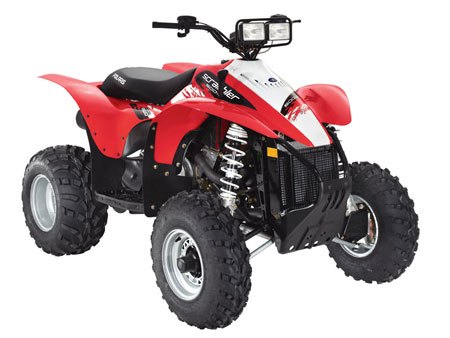







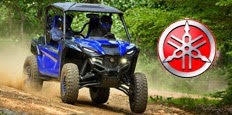






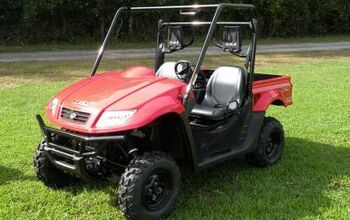
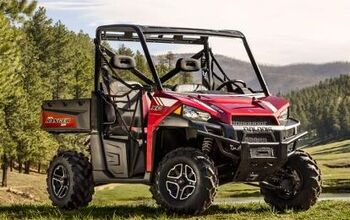
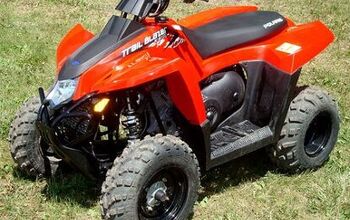
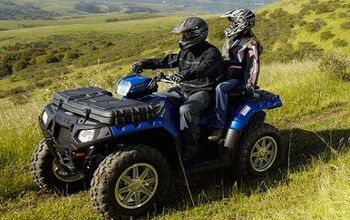
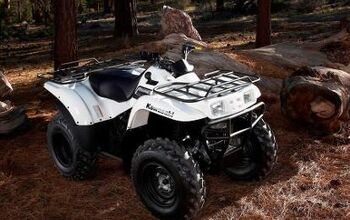
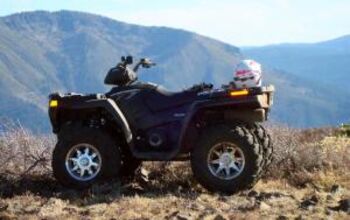
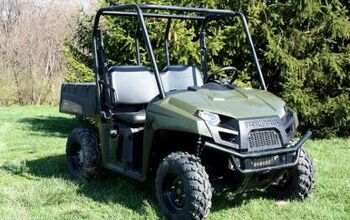
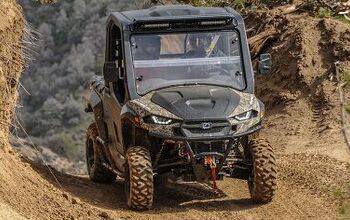
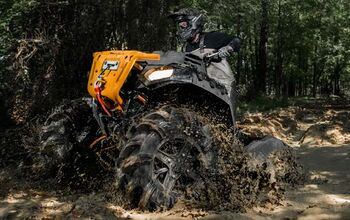
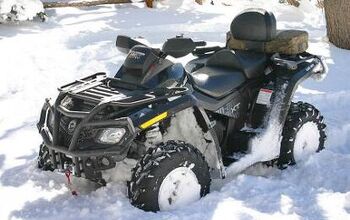
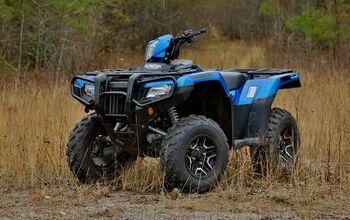
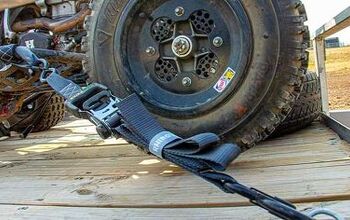
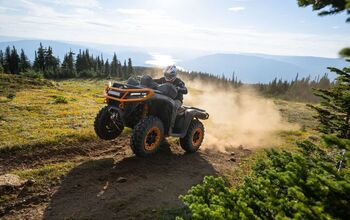
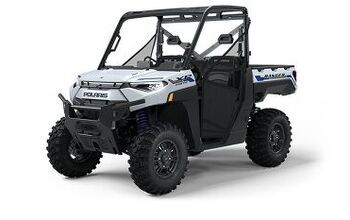
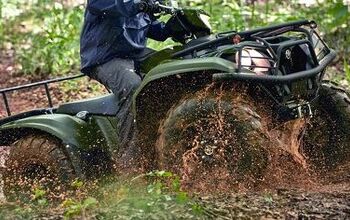
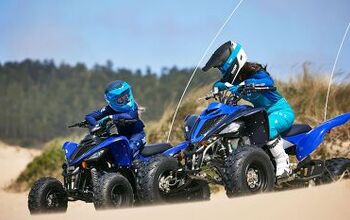

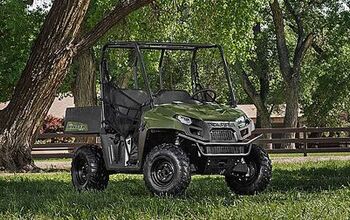
Comments
Join the conversation